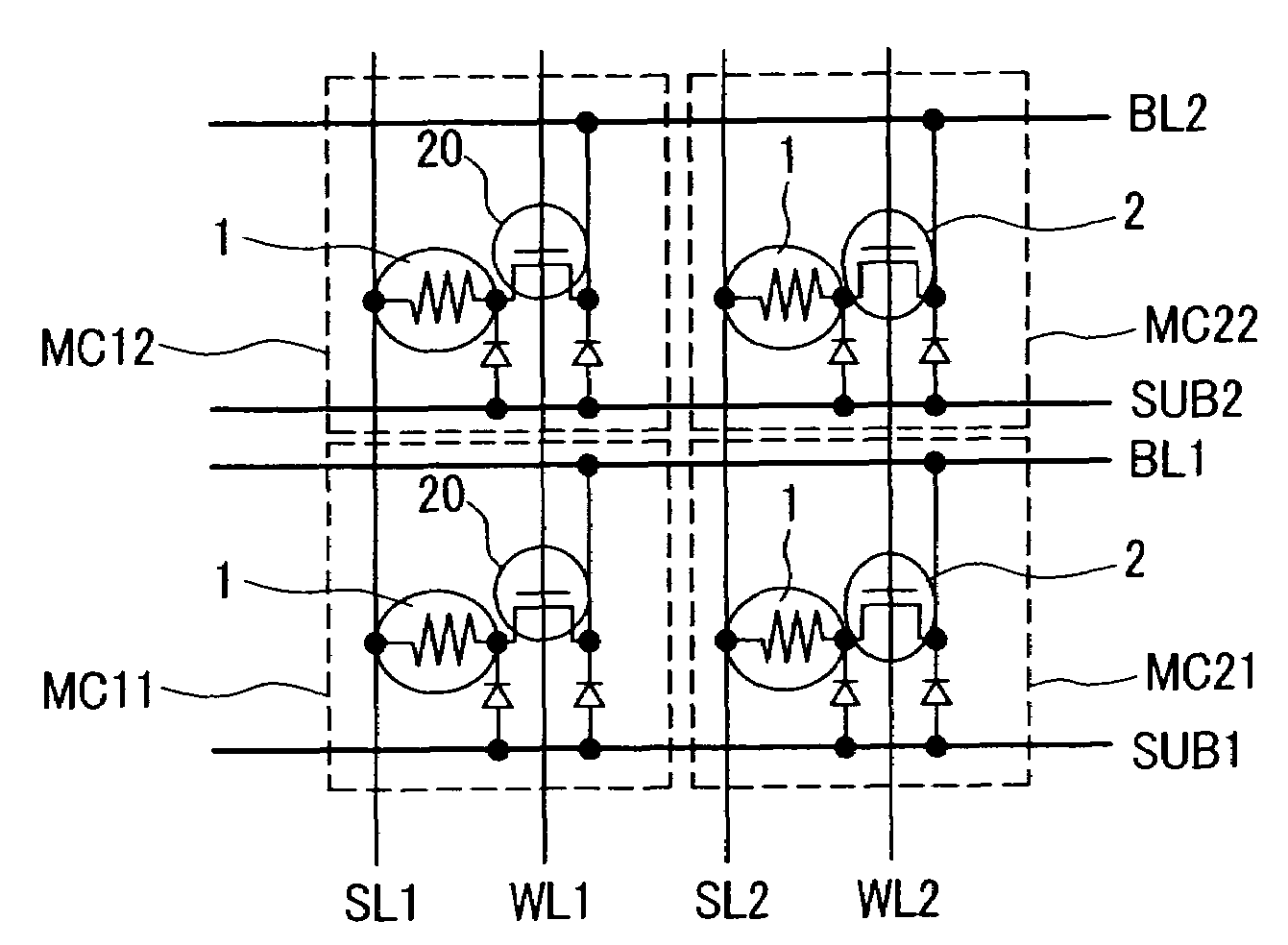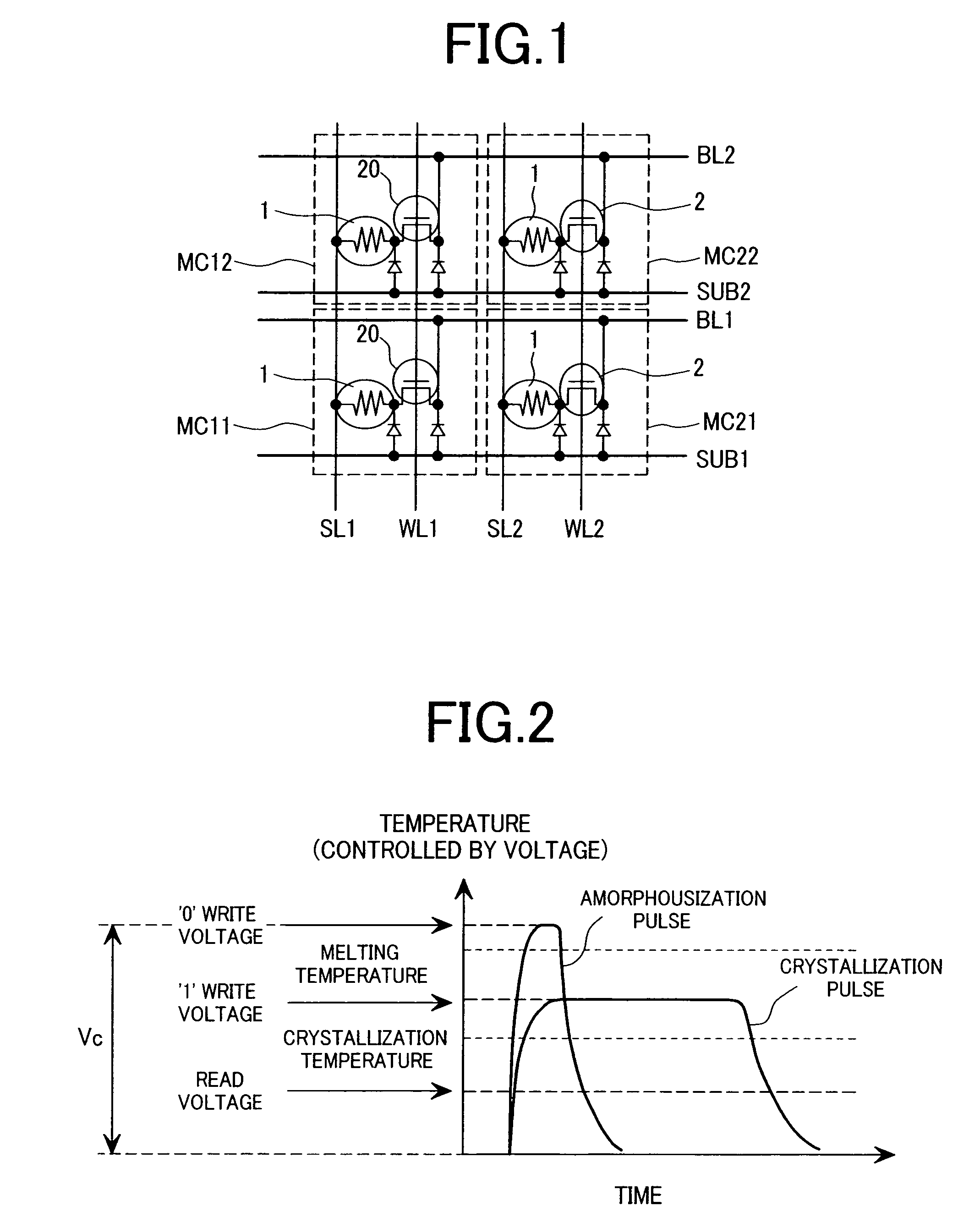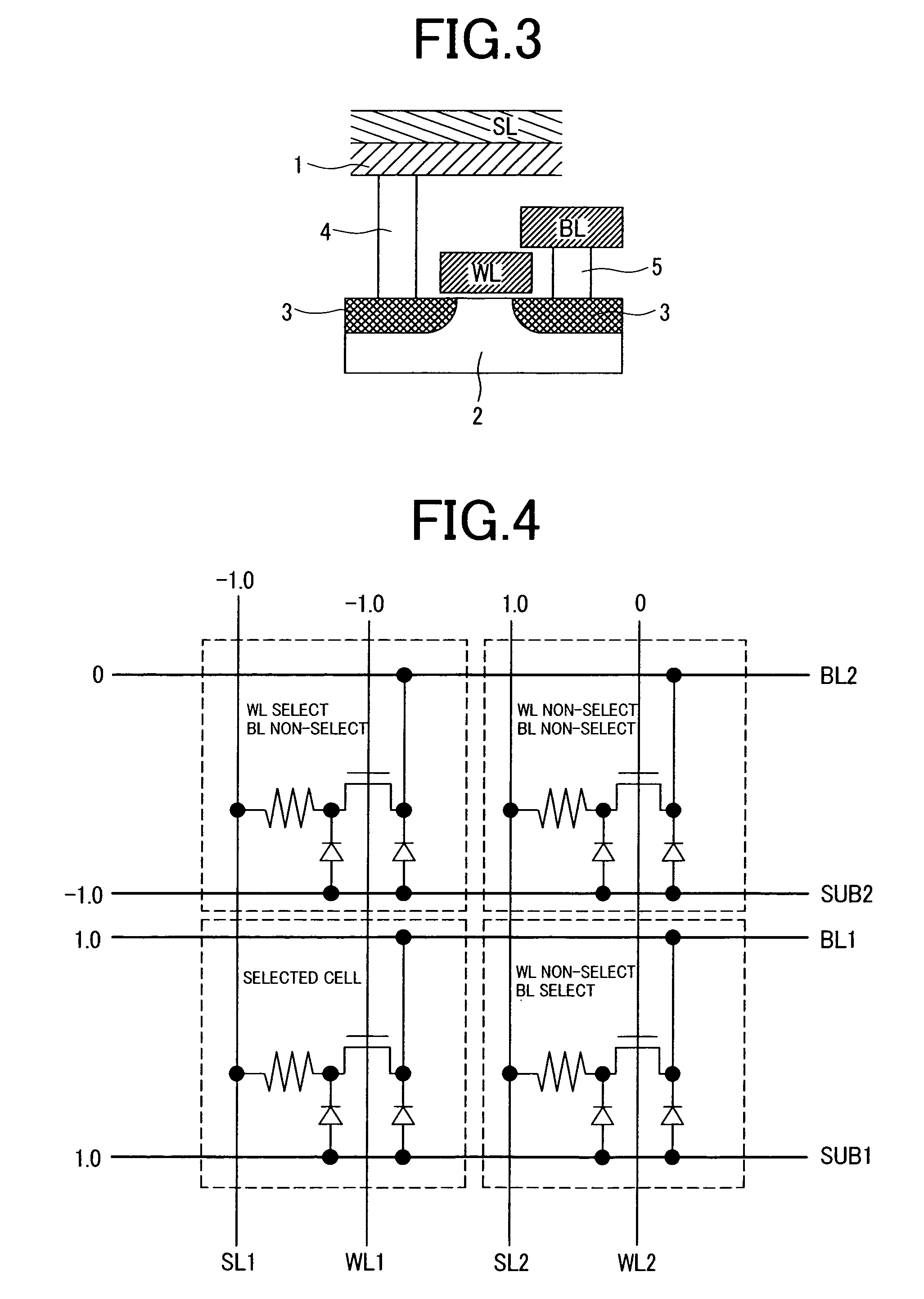Semiconductor memory
a technology of semiconductor devices and memory cells, applied in semiconductor devices, digital storage, instruments, etc., can solve the problems of limitation of conventional memory cells in implementing high-speed performance of cells, and achieve the effect of preventing the occurrence of read disturbances
- Summary
- Abstract
- Description
- Claims
- Application Information
AI Technical Summary
Benefits of technology
Problems solved by technology
Method used
Image
Examples
first preferred embodiment
[0051]FIG. 1 is a structural diagram illustrating a memory array according to the present invention. A method for fabricating a memory array of FIG. 1 will hereinafter be described according to a fabrication process of the memory array. FIG. 1 shows only the memory array. An isolation layer 6 is formed as shown in FIG. 5. FIG. 5 is a top view illustrating a fabrication process of a semiconductor memory according to a first preferred embodiment of the present invention. In order to form the isolation layer 6, a trench groove is formed in a silicon substrate by general photolithography and dry-etching processes. A CMOS well is formed by a general fabrication method. An N-type well is formed in a memory array. In order to implement the memory array of FIG. 1, a substrate potential of the cell array is separated in the direction parallel to a bit line. For this purpose, only the memory array is exposed by the general photolithography, and a p-type diffusion layer 8 is deposited under th...
second preferred embodiment
[0072]The second preferred embodiment of the present invention relates to a method for implementing a phase-change memory array having superior noise resistance. For this purpose, the second preferred embodiment of the present invention employs a folded bit-line arrangement (i.e., a memory array including two intersection points) widely used for DRAMs. A fabrication process of the second preferred embodiment is almost similar to that of the first preferred embodiment. Also, the second preferred embodiment also uses a method for isolating each component using a gate electrode in the same manner as in the first preferred embodiment. The fabrication method of the second preferred embodiment will hereinafter be described with reference to the annexed drawings. A method for isolating each component, a method for forming a word-line electrode, and a method for forming an impurity diffusion layer of the second preferred embodiment are equal to those of the first preferred embodiment, and a...
third preferred embodiment
[0075]The first and second preferred embodiments have isolated each component by a combination of a shallow trench isolation and a field plate isolation. The third preferred embodiment employs only the shallow trench isolation. The third preferred embodiment does not use a gate electric field for isolation of each component, such that it can easily control a word system, and a detailed description thereof will hereinafter be described. N-type well is formed in the memory cell array using a P-type substrate. An isolation layer shown in FIG. 26 is formed by a typical CMOS process. Next, in order to isolate a substrate potential in a direction parallel to a bit line, a resist pattern of FIG. 27 is used as a mask, and implantation of P-type impurity is executed. FIG. 28 is a cross-sectional view illustrating a semiconductor memory taken along the line A-A of FIG. 27. A diffusion layer must be thicker than the isolation layer 6, differently from the example of FIG. 6. The remaining parts...
PUM
 Login to View More
Login to View More Abstract
Description
Claims
Application Information
 Login to View More
Login to View More - R&D
- Intellectual Property
- Life Sciences
- Materials
- Tech Scout
- Unparalleled Data Quality
- Higher Quality Content
- 60% Fewer Hallucinations
Browse by: Latest US Patents, China's latest patents, Technical Efficacy Thesaurus, Application Domain, Technology Topic, Popular Technical Reports.
© 2025 PatSnap. All rights reserved.Legal|Privacy policy|Modern Slavery Act Transparency Statement|Sitemap|About US| Contact US: help@patsnap.com



